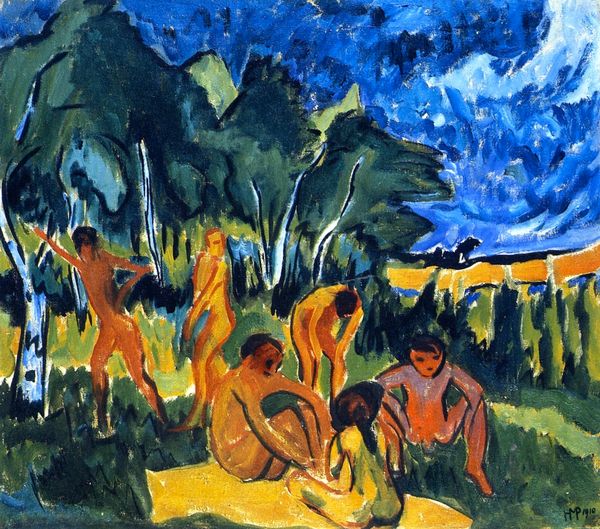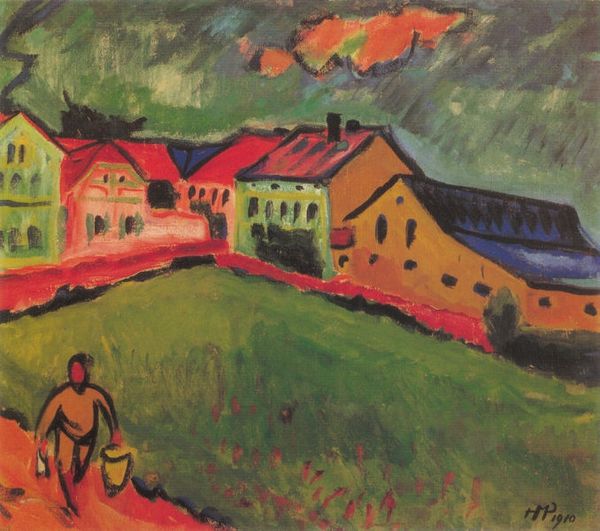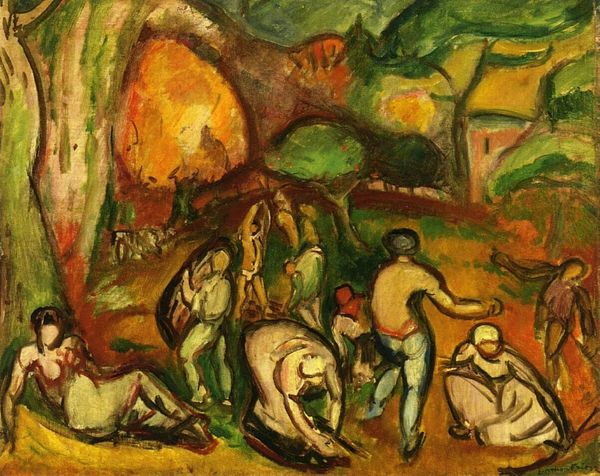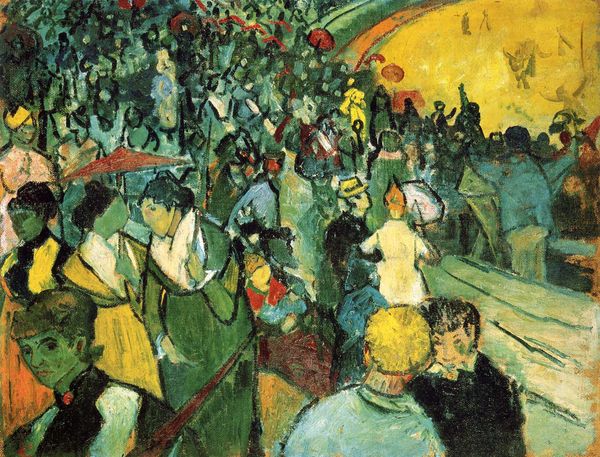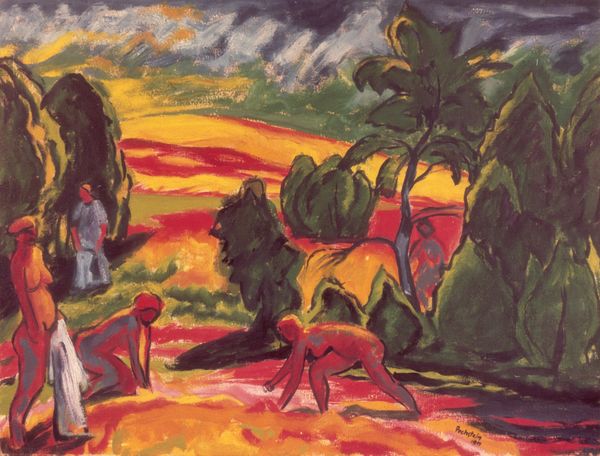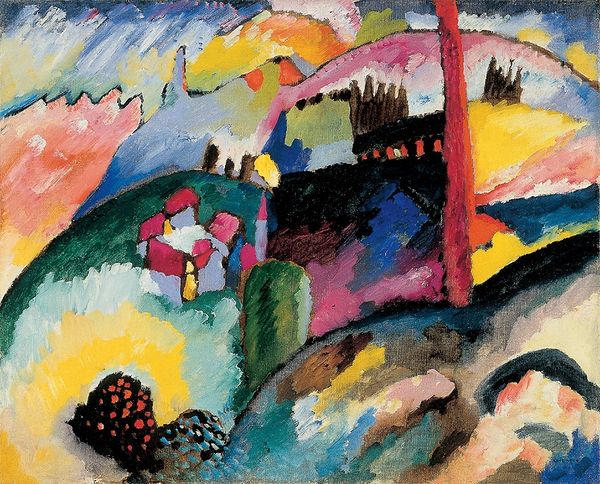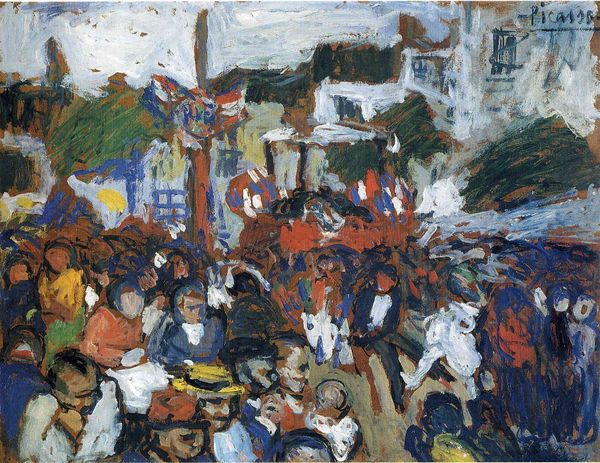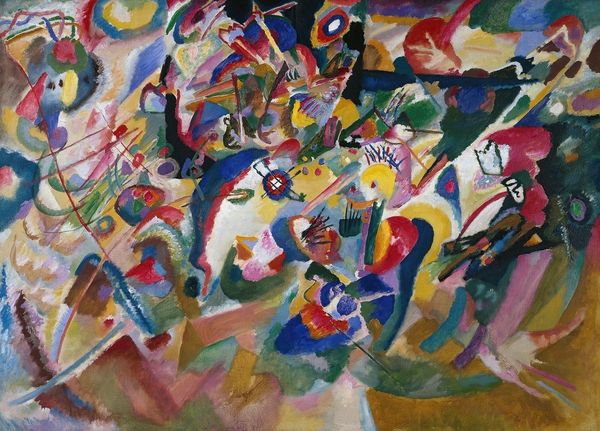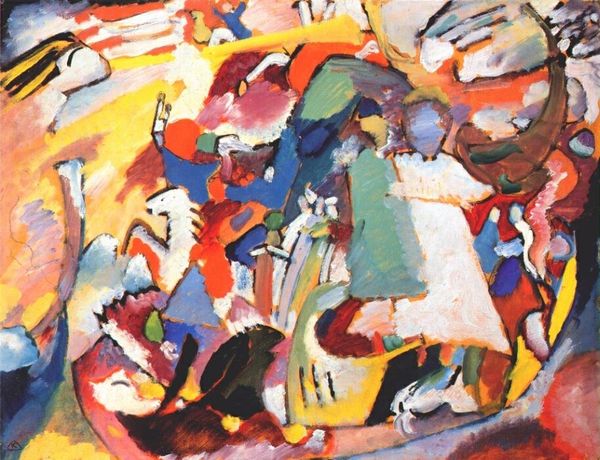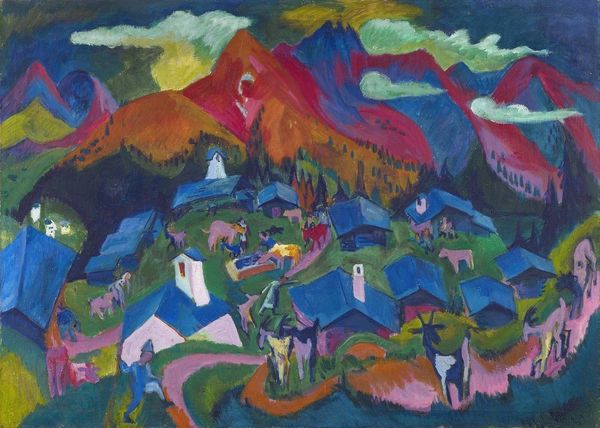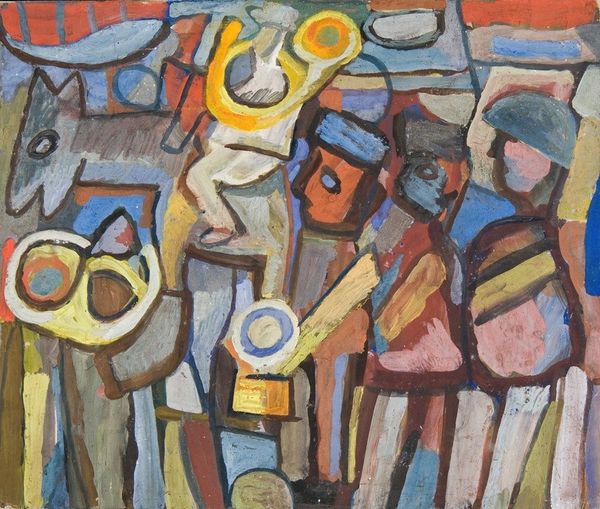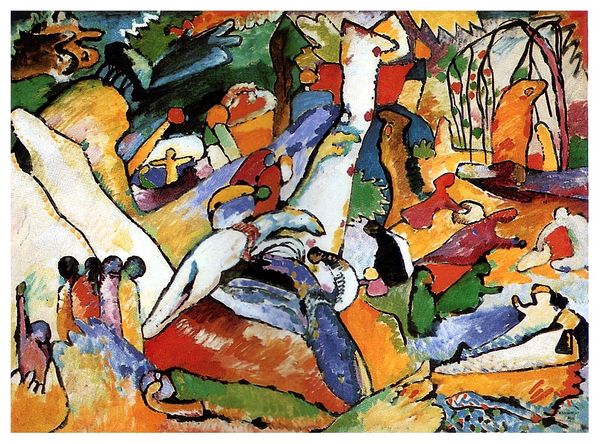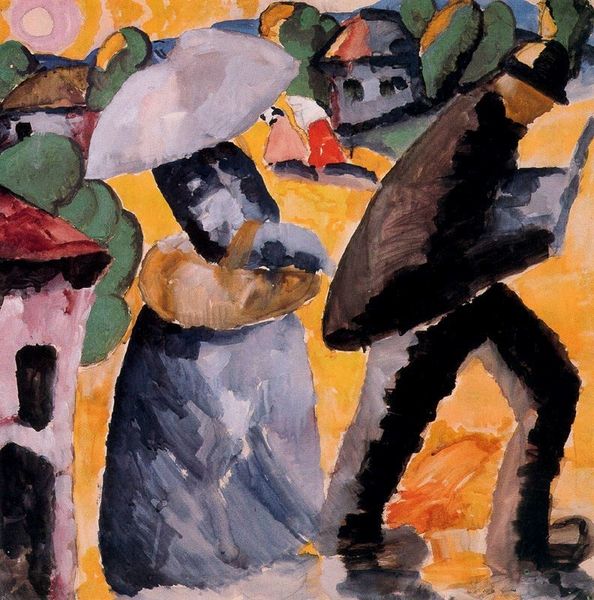
painting, oil-paint
#
fauvism
#
fauvism
#
painting
#
oil-paint
#
landscape
#
german-expressionism
#
oil painting
#
geometric
#
expressionism
#
naive art
#
genre-painting
#
expressionist
Copyright: Public domain US
Curator: Standing before us is Max Pechstein's "Horse Fair," an oil on canvas he completed in 1910. Editor: It’s immediately vibrant, almost aggressively so. The colours feel very deliberately chosen. What strikes me most is how flattened the perspective seems – the figures are stylized, and the space feels compressed. Curator: Indeed, the painting exemplifies the artist's fauvist and expressionist leanings. Notice the distortion of forms, and that unapologetic use of colour. It’s quite radical, even shocking, especially if you contrast it against the backdrop of pre-war anxieties that permeate this period of German history. Editor: So, these stylistic choices – the colour, the distortion – how do they reflect the public role of art at that moment, and more specifically, German Expressionism’s sociopolitical aims? Curator: Well, it can be argued that they served as an intentional jolt, disrupting traditional notions of beauty and representation. Expressionists believed art could reflect the raw emotionality of lived experience. It confronted alienation within modernity by making private anxieties public. Think of the rapid industrialization, urbanization, and increasing class disparities during that period. The Fauvist influence would then inject a sense of liberation and escape from oppressive social norms. Editor: The choice of a "Horse Fair" as a subject seems somewhat... pedestrian when framed within this context, though. I see an outdoor gathering, rendered with bold strokes—was there a larger symbolic intent here? Curator: I interpret Pechstein's selection of subject as being subversive itself. Genre paintings of common life had always existed. However, Expressionists used them not to celebrate normalcy, but to question it. Look at how anonymous the human figures are. The frenzied energy, with this marketplace setting can signify broader concerns about modern society’s dehumanizing effects and also humanity's innate connection to nature, symbolized by the majestic yet possibly mistreated animals here. The artist positions his concerns front and centre for public interrogation. Editor: Looking again, I now recognize in this organized chaos of form and colour that emotional undercurrent. In the painting, both humans and animals seem confined by forces just beyond their control. Curator: Exactly. Pechstein urges us to delve deeper. It challenges us to unpack societal issues related to humanity, nature, and commerce within his own time, but also compels us to reconsider and question the relevance of such problems today. Editor: An exercise in considering socio-economic pressures from over a century ago… That is, it turns out, rather evocative, even now.
Comments
No comments
Be the first to comment and join the conversation on the ultimate creative platform.
